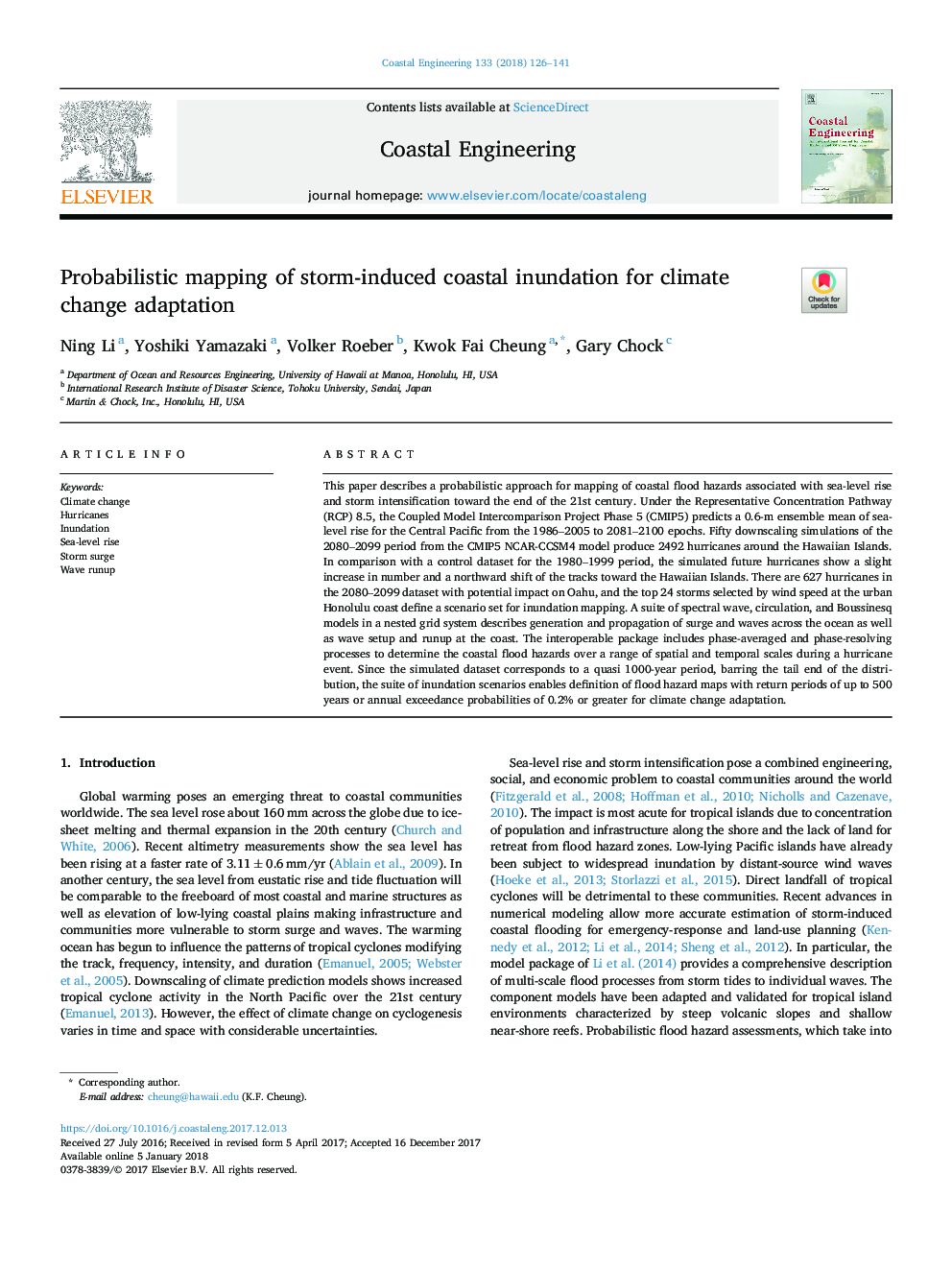| Article ID | Journal | Published Year | Pages | File Type |
|---|---|---|---|---|
| 8059575 | Coastal Engineering | 2018 | 16 Pages |
Abstract
This paper describes a probabilistic approach for mapping of coastal flood hazards associated with sea-level rise and storm intensification toward the end of the 21st century. Under the Representative Concentration Pathway (RCP) 8.5, the Coupled Model Intercomparison Project Phase 5 (CMIP5) predicts a 0.6-m ensemble mean of sea-level rise for the Central Pacific from the 1986-2005 to 2081-2100 epochs. Fifty downscaling simulations of the 2080-2099 period from the CMIP5 NCAR-CCSM4 model produce 2492 hurricanes around the Hawaiian Islands. In comparison with a control dataset for the 1980-1999 period, the simulated future hurricanes show a slight increase in number and a northward shift of the tracks toward the Hawaiian Islands. There are 627 hurricanes in the 2080-2099 dataset with potential impact on Oahu, and the top 24 storms selected by wind speed at the urban Honolulu coast define a scenario set for inundation mapping. A suite of spectral wave, circulation, and Boussinesq models in a nested grid system describes generation and propagation of surge and waves across the ocean as well as wave setup and runup at the coast. The interoperable package includes phase-averaged and phase-resolving processes to determine the coastal flood hazards over a range of spatial and temporal scales during a hurricane event. Since the simulated dataset corresponds to a quasi 1000-year period, barring the tail end of the distribution, the suite of inundation scenarios enables definition of flood hazard maps with return periods of up to 500 years or annual exceedance probabilities of 0.2% or greater for climate change adaptation.
Related Topics
Physical Sciences and Engineering
Engineering
Ocean Engineering
Authors
Ning Li, Yoshiki Yamazaki, Volker Roeber, Kwok Fai Cheung, Gary Chock,
